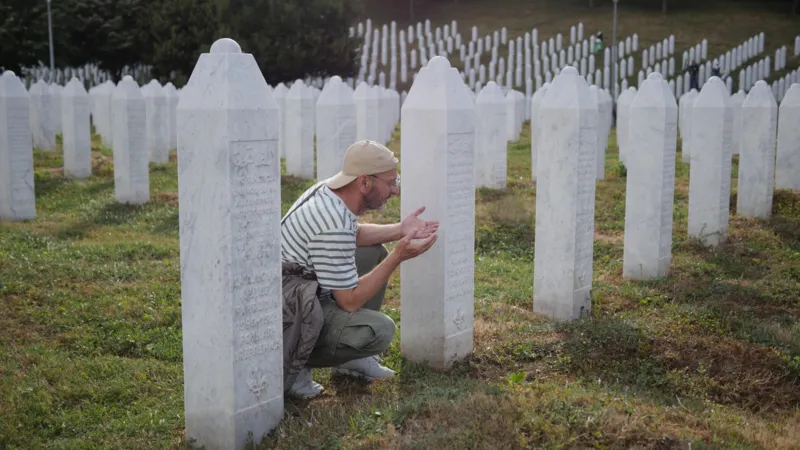From Victoria Beckham to Coleen Rooney: How the WAGs became the women that Britain 'loved to hate'
The WAGs (wives and girlfriends) of footballers hold a strange fascination for Brits, with tabloids blaming them for the England team's loss in the 2006 World Cup. As two new documentaries tell the stories of Victoria Beckham and Coleen Rooney, Clare Thorp explores why the WAGs exert such a pull.

There's a moment in the first episode of Coleen Rooney: The Real Wagatha Story – a new documentary series telling the story behind her blockbuster libel case with Rebekah Vardy – in which paparazzo George Bamby remembers the first time he was sent to photograph an unsuspecting Rooney, then known as Coleen McLoughlin. It was 2002 and her 16-year-old footballer boyfriend Wayne had just scored his first Premier League goal for Everton. The British tabloids wanted to know everything about this new star – including who he was dating. Coleen was the same age, still in school, and suddenly her walk home involved navigating the men hiding behind bins to get her picture.
Coleen and Wayne met when they were 12, and starting dating a few years later. In the new documentary she explains that Wayne did all the chasing – he says he "knew she was different to all the other girls" – but as soon as the young couple hit the spotlight, it was she who was seen as the lucky one. "Coleen was in a position that so many young girls of her age would dream about, being with a Premiership footballer," says Bamby.
At the start of the 21st Century, footballers were painted as the most eligible bachelors around. Since the start of the Premier League in 1992, the amount of money involved in football had shot up dramatically – with Manchester United signing Roy Keane for £3.75m in 1993 and Rio Ferdinand for nearly £30m in 2002 (in 2009 Real Madrid would pay a world record £80m for Cristiano Ronaldo). Football and popular culture – especially music and fashion – were increasingly intertwined too, thanks in no small part to one particular player: David Beckham.
Another recent documentary, Netflix's Beckham, charts the ups and downs of his career on and off the pitch, and his relationship with wife Victoria. Unlike Coleen Rooney, Victoria Beckham – then Adams – was already a household name when she met David in 1997. "I wasn't one of these girls who would be interested in footballers because they're famous," she says in the TV series. "I don't mean this in an arrogant way, but I had that for myself."
As one-fifth of the biggest girl band in the world, Spice Girls, she was undoubtedly the bigger star at first ("I loved being in her world," says Beckham). Yet, a few years later, Beckham, like Rooney and dozens of other young women who happened to be the wife or girlfriend of a famous footballer would find her identity reduced to a single label: "WAG".
The partners of footballers had always attracted some degree of interest: in the 1966 World Cup, photographs captured the England teammates' wives enjoying a celebratory banquet together at a London hotel. But for the most part, footballers' wives weren't regular tabloid fodder, and that's how many managers wanted it to stay – not least Manchester United's Alex Ferguson, who famously clashed with Beckham over his high-profile relationship.
The acronym WAG started floating around in 2002 – used in a Sunday Telegraph article to reference a nickname given to players' wives and girlfriends by a Dubai hotel. That same year ITV launched its camp – now cult – drama Footballer's Wives. But it was at the 2006 World Cup in Germany that the term – and concept – really exploded.
In total, 22 wives and girlfriends (out of a total of 23 players) descended on the spa town of Baden Baden that summer to support their partners. The cohort was led by Victoria Beckham (dubbed "Queen Wag") and Girls Aloud's Cheryl Cole (then Tweedy), and also included Coleen McLoughlin and Abbey Clancy.
While the back pages covered England's performance on the pitch, the front pages lapped up stories of the "WAGs" dancing on nightclub tables, working their way through magnums of champagne and hitting designer boutiques. The women were photographed walking the streets of Baden Baden in a pack, like Reservoir Dogs, but with better tans, bigger hair extensions and more shopping bags.
There were stories about feuds – Victoria Beckham apparently shunning raucous nights out for quiet dinners (the explanation that she had two small children with her didn't stop the rumour mill) – but, mostly, everyone seemed to be enjoying themselves. It was like a hen party on steroids.
At that time, the obsession with celebrity culture was peaking. Competition among the tabloids and a new raft of celebrity magazines created a constant thirst for stories, while the rise of reality TV had fuelled a desire for famous faces that were relatable, rather than untouchable.
Part of the appeal of the WAGs was the rags-to-riches element. Many were young, working-class women, often childhood sweethearts of the players. As Coleen Rooney says of her and Wayne in her documentary: "All of a sudden, we were given opportunities to go places, to do things we hadn't experienced before."
Rooney, like many others, grabbed many of the opportunities offered to her – writing a magazine column, publishing an autobiography and releasing a work-out video. Wayne Rooney's agent says in the documentary: "At the beginning it was like a Disney story. Here was this young couple from a very working-class background thrust into glamour, limelight, riches."
The blame game
But a backlash was looming. The early 2000s was a time when famous women like Britney Spears and Lindsay Lohan received frequently cruel and misogynistic treatment in the media. Whether it was their dress sense, their body or their behaviour on a night out, there was always something to criticise – and the WAGs were soon subject to the same treatment.
During the tournament, Spanish newspaper ABC wrote: ''Not even the stores of Vuitton and Gucci can keep up with the daily attack of the hooligans with Visas." The British newspapers – happy to profit from the girls' antics – also started sharpening their knives. One Daily Mail writer said: "Their lack of imagination and narrowness of outlook is staggering. They possess no curiosity about anything other than clothes, champagne and their reflections." The disdain expressed for the WAGs often reeked of classism, as well as misogyny – as if these women should know their place.
When England got knocked out by Portugal in the 2006 quarter-finals, some laid the blame on the WAGs for being a distraction (Rio Ferdinand described Baden-Baden as "a circus"). Ahead of the 2010 World Cup in South Africa, manager Fabio Capello announced that wives and girlfriends would only be allowed to visit players one day a week, after matches. Without the supposed distraction, England crashed out even earlier, defeated 4-1 by Germany and only winning one of the four matches they played.
That same year, the Equalities and Human Rights Commission criticised the term WAG, calling it "offensive" and saying it was usually used to demean women.
Over the following years, the rise of social media stars and the phone hacking scandal somewhat stymied the tabloid hold on celebrity culture, and WAGs no longer dominated the headlines in the same way.
Rooney retreated from the limelight, concentrating on raising her and Wayne's four children. Until late 2019, that is, when one Instagram post – in which she publicly identified Rebekah Vardy, wife of football player Jamie, as the owner of the account leaking stories about her to The Sun newspaper – thrust her back on to the front pages.
Quickly dubbed the "Wagatha Christie" case, the media and public revelled in the public spat. Two footballers' wives going to battle was hard to resist and the story spurned endless memes, jokes and coverage. But, as Coleen points out in her documentary: "I personally didn't find it funny."
Vardy sued Rooney for defamation, leading to one of the biggest libel trials in UK history. Vardy lost and was ordered to pay an estimated £3m in legal costs. "It was a pathetic reason to go to court," admits Rooney, who says she just wanted "justice for telling the truth". In doing so, the woman who had been followed by paparazzi photographers since she was 16 exposed the inner workings of the tabloids, and took back control of her own story.
In the Beckham documentary, too, Victoria gets to tell her side, including the vile chants from fans at games and the blame heaped on her for her husband's poor performances on the pitch. "I was always the villain," she says, recalling the intense criticism she received from the media for not immediately joining her husband in Spain when he signed to Real Madrid.
Both women touch on the pain caused by their partner's alleged affairs – while the players themselves apologise for any hurt they caused and reiterate how important their wives and families are to them. "Looking up to the stand and seeing Victoria, it was the one thing that spurred me on," says David.
As for the term WAG, Coleen Rooney told BBC Woman's Hour: "We all live different lives. We are all individuals. So to bring us all together in one term is unfair." Even Rebekah Vardy has called the term "outdated."
The term may be obsolete, but as interest in the new documentaries shows (Beckham is Netflix's most watched show in the UK this year, and Victoria has been called the MVP of the series), we're still fascinated by these women's stories. The difference is that now, they get to tell them themselves. And it's proving that, actually, it's their husbands who were the lucky ones all along.
-bbc






